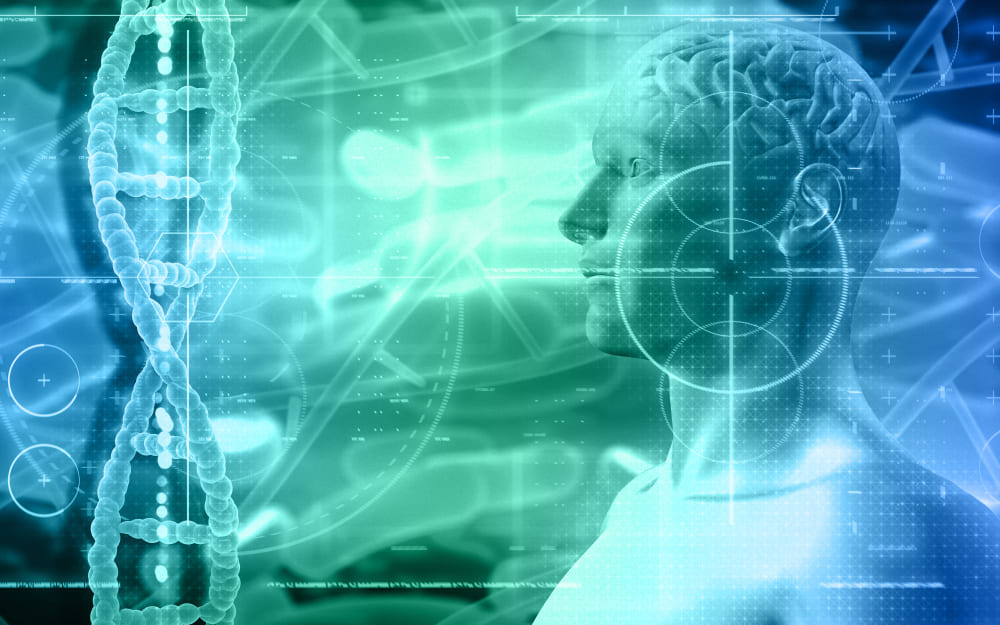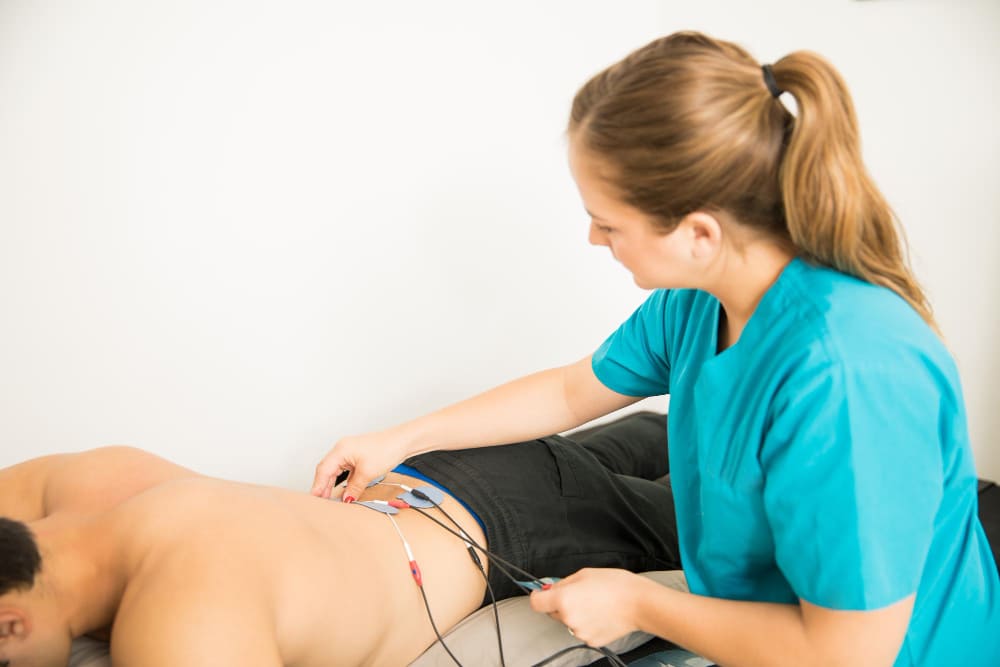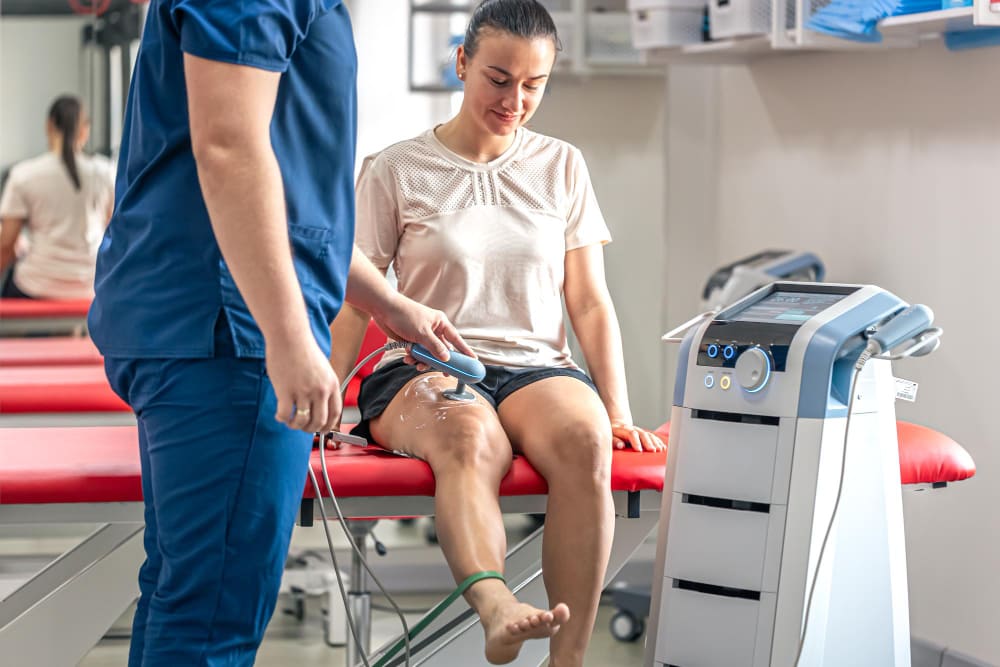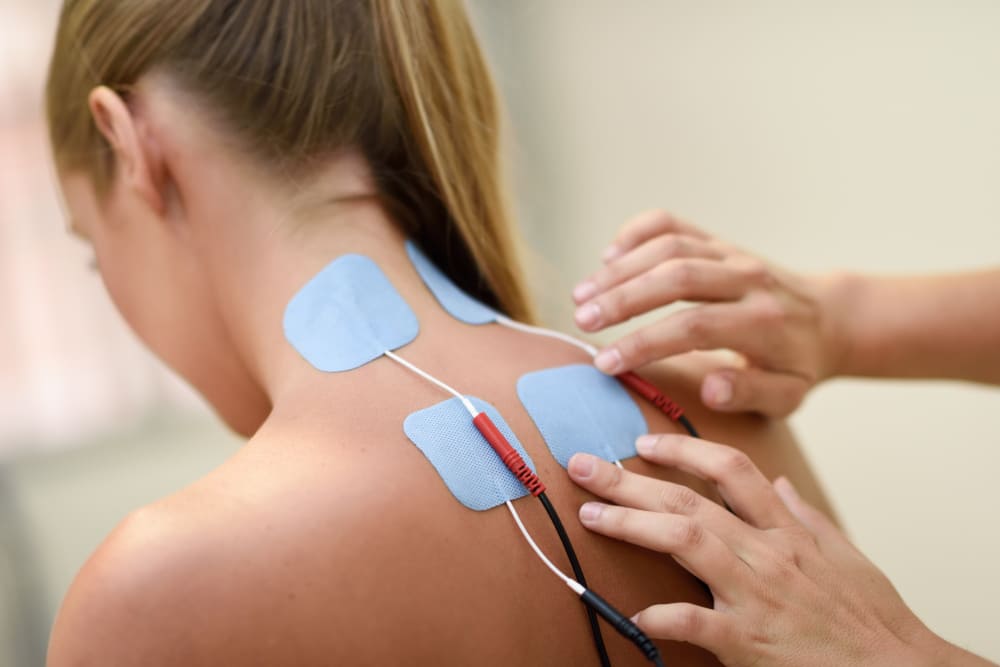Millions of people are seeking better ways to address their chronic pain because it won’t go away. Peripheral nerve stimulation may provide a fresh ray of hope after all other alternatives have been tried. If traditional pain treatments are ineffective, this minimally invasive technology may be able to pinpoint the specific nerves that are transmitting pain signals. Thanks to medical advances that let physicians correctly provide electrical stimulation to peripheral nerves, patients may now get a second chance at a good quality of life.
What is PNS and Its Core Mechanics?
Peripheral nerve stimulation is a focused approach to treating pain. It uses electrical impulses to stop pain signals from getting to the brain. This therapy targets the exact neural circuits that generate localized pain syndromes, as opposed to more general ways of pain management. The procedure includes sending controlled electrical pulses from small electrodes that are positioned near particular peripheral nerves. These pulses generate a tingling feeling that hides pain signals as they move to the brain.
Nerve stimulation is quite helpful for patients with clear pain patterns because it allows clinicians at Global Clinic to pinpoint the exact places where the pain is coming from.
The Science Behind Peripheral Nerve Stimulation Technology
Peripheral nerve stimulation operates on the gate control theory of pain, which suggests that non-painful electrical signals can block painful signals from reaching the brain. When the stimulator device sends electrical impulses to targeted nerves, these signals travel faster than pain signals, effectively “closing the gate” on pain transmission.
Modern stimulation devices use sophisticated programming capabilities that allow physicians to adjust frequency, pulse width, and amplitude parameters. These customizable settings enable precise control over the stimulation pattern, ensuring optimal pain relief for each individual patient.
Key features of modern peripheral nerve stimulators include:
- Adjustable frequency, pulse width, and amplitude for tailored therapy
- Wireless programming for clinician convenience
- Rechargeable batteries for long-term use
- Handheld patient controllers for real-time adjustment
- Compact and minimally invasive design options

Medical Conditions Effectively Addressed Through PNS Treatment
PNS treatment has been very effective for a lot of chronic pain conditions. Stimulating the occipital nerve is an effective treatment for occipital neuralgia, a condition that causes severe headaches and neck pain. People who with this debilitating sickness typically feel much better when standard headache remedies don’t work. Patients with chronic pain following surgeries, particularly those that damage nerves, may benefit from stimulating the affected peripheral nerves.
People with limb-specific complex regional pain syndrome (CRPS) have discovered that peripheral stimulation therapy helps them feel better. When existing treatments for this disease, which causes extreme pain and sensitivity, don’t work, nerve stimulation is a good choice.
Clinical Advantages of Peripheral Nerve Stimulation for Chronic Pain Management
Using peripheral nerve stimulation to treat chronic pain has a number of distinct advantages over more traditional pain treatment approaches. Patients may feel less anxious about the surgery since the treatment is reversible, which means they may test it out before deciding to have it permanently implanted.
The implantation procedure puts less stress on the tissue since it employs small cuts to place electrodes near to the target nerves. This less invasive approach cuts down on recovery time by a lot compared to more invasive surgeries.
Key benefits of the treatment include:
- Trial-first approach: Patients can test the therapy before deciding on permanent implantation.
- Minimally invasive technique: Small incisions mean less discomfort and quicker recovery.
- Targeted relief: Pain is managed locally without the widespread effects of systemic medication.
- Opioid reduction: Many patients are able to cut back or stop using opioid medications.
- Long-lasting devices: Battery life spans several years, and rechargeable models last even longer.
The targeted nature of peripheral nerve stimulation means patients can achieve pain relief without the systemic side effects associated with oral medications. Battery life in modern devices extends for several years, and some systems offer rechargeable options that can last even longer. This longevity reduces the frequency of surgical interventions needed to maintain the therapy.

The Complete PNS Procedure Experience
The peripheral nerve stimulation process begins with careful patient selection and comprehensive evaluation. Physicians assess pain patterns, previous treatment responses, and psychological factors to determine candidacy for the procedure.
Trial stimulation represents a crucial phase where temporary electrodes test the effectiveness of nerve stimulation for each patient. During this week-long trial period, patients maintain detailed pain diaries and activity logs to document their response to stimulation.
Successful trial participants proceed to permanent implantation, where electrodes are placed through small incisions using image guidance. The peripheral nerve stimulator device is typically implanted under the skin in a location that allows for comfortable daily activities.
Post-operative programming sessions allow physicians to fine-tune stimulation parameters for optimal pain relief. Patients learn to operate their device controllers and understand how to adjust settings within safe parameters.
Evidence-Based Outcomes and Long-Term Success Metrics
Long-term follow-up data shows sustained pain relief at two-year intervals for most successful patients. The durability of peripheral stimulation effects makes it a cost-effective treatment option for chronic pain management over extended periods.
Patient satisfaction surveys consistently show high rates of treatment satisfaction, with many patients reporting:
- Improved sleep quality
- Increased physical activity
- Reduced reliance on medications
- Enhanced overall quality of life
Complication rates remain low, with most adverse events related to minor surgical site issues or device programming adjustments. Serious complications are rare when the procedure is performed by experienced physicians using proper techniques.

The Evolution of PNS Technology
New peripheral nerve stimulation technologies are centered on more compact, high-tech devices that can be programmed more effectively. The state-of-the-art in stimulation technology are closed-loop systems that automatically modify stimulation according to the patient’s activity levels.
Patient convenience and quick reaction to changing pain patterns are both enhanced by the ability to remotely monitor and alter stimulation settings, made possible via wireless programming. The uses of peripheral nerve stimulation in the treatment of chronic pain are being further broadened by these technical advancements.
Beyond Pain Relief
Peripheral nerve stimulation has changed the way that thousands of patients with few options for pain therapy manage their suffering. This procedure is best for those who have chronic pain in one area since it can be reversed, is not very intrusive, and is personalized to each person. Choosing the right patients, having experienced surgical teams, and being willing to try different things until you find what works are all important for success. Peripheral nerve stimulation provides a genuine potential to live without pain for a long period for those who are suitable candidates.
FAQ
1. How do I know if I’m a good candidate for peripheral nerve stimulation?
Peripheral nerve stimulation is ideal for patients with chronic pain who haven’t responded to conservative treatments. A short trial period helps determine its effectiveness before permanent placement.
2. What types of pain does it treat best?
It’s most effective for localized neuropathic pain, including conditions like CRPS, post-surgical pain, and occipital neuralgia.
3. Is the procedure painful?
The procedure is minimally invasive and usually well-tolerated with local anesthesia. Most patients report only mild discomfort.
4. Are there any risks or side effects?
Complications are rare and typically minor, such as slight swelling or device adjustment issues. Serious side effects are uncommon when performed by experienced professionals.
5. How long does the pain relief last?
Many patients experience relief within days and maintain results for years. Long-term studies confirm sustained benefits in most successful cases.


